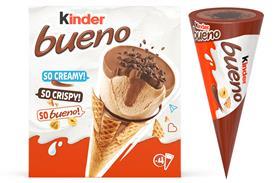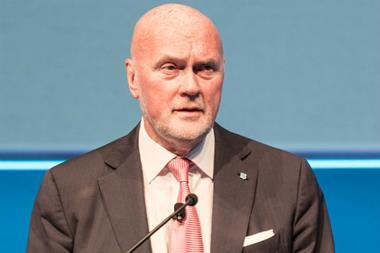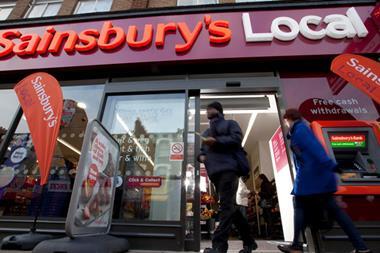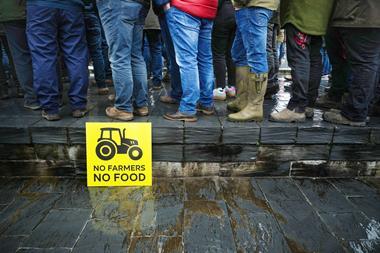It was the swingometer that started it. As soon as Tesco thrust its blue arrow in our faces 18 months ago using sales data to claim it was the cheapest supermarket, Asda responded with its green arrow using data from The Grocer 33 and mysupermarket.co.uk to make its own claims.
It’s been all-out war ever since. And now, with the New Year only days old, Tesco has upped the ante again with a TV and press campaign that attacks Asda, Morrisons and Sainsbury's, particularly Asda.
All’s fair in love and price wars, you might argue. But the aggressive tone of its latest campaign has raised a few eyebrows. Coming as it does after ads in which Tesco has variously re-labelled itself Britain’s Biggest Discounter, emphasised its green credentials and told us we can ‘Keep Christmas special at Tesco’, it has also raised a big question – has the Every Little Helps retailer lost its marketing mojo?
Tesco insists its latest strategy is clear and accurate and simply aims to set the record straight. “These are real baskets randomly selected from our Clubcard holders, and we have worked out what you would have to pay at Asda,” says Lucy Neville-Rolfe, corporate affairs director at Tesco. “What we have tried to do is ensure we include the everyday essentials such as milk and eggs – items not in the Dads Army arrow ads.”
However, Asda argues that the ads are misleading and this week lodged a complaint with the Advertising Standards Authority, disputing Tesco’s claims that Asda excludes fresh meat, milk, eggs and own-label products in its comparisons and that “real basket results” show Tesco is cheaper.
The ad has also drawn fire from industry experts. Naming competitors in adverts smacks of desperation, according to Dave McCarthy, retail and consumer analyst at Hobart Capital. “It gives oxygen to the competition,” he says. “It is also a tacit admission the competition has been winning.”
While Asda’s marketing with its dedicated focus on price has struck a chord, Tesco has struggled to hit the right note, he says. “Asda will just carry on what it is doing, because it is winning the price argument. I don’t think the Tesco advert will carry any traction.”
McCarthy is also unsure about the effectiveness of combining the Britain’s Biggest Discounter strapline with the long-standing Every Little Helps on both print and TV ads. “There is a degree of inconsistency and confusion that has been going on for a while,” he says.
While Tesco can use its data to show how many of its shoppers could have bought the same basket more cheaply at Asda, it has no idea how many Asda baskets could have been bought more cheaply at Tesco, because it has no access to Asda sales data, McCarthy adds.
A rival supermarket CEO is equally scornful. “I see a lot of jumps in its marketing strategy,” he says, singling out the Britain’s Biggest Discounter ad for criticism. “If getting customers to downgrade was its plan, it worked.”
Tesco needs to have a clearer message, says Brand Forensics founder Jonathan Gabay. He cites the “single-minded” approach of Sainsbury's Feed Your Family for a Fiver ads as a good example.
“If you have too many messages, you’re going to confuse the consumer. In a recession you have really got to keep things simple to get the consumer to do what you want them to do,” he says.
Tesco insists its dual strapline is not confusing. It will be pushing its Discounter range hard this year and is working on plans to bring the range back to the power aisles, says Neville-Rolfe.
“When we brought out Value in the first recession, people said it was a mistake, but actually we came out of the last recession very well,” she adds.
Whether it comes out of this one well remains to be seen. One thing’s for sure, though: in a climate where every little thing matters, Tesco’s every little move will be under scrutiny.
It’s been all-out war ever since. And now, with the New Year only days old, Tesco has upped the ante again with a TV and press campaign that attacks Asda, Morrisons and Sainsbury's, particularly Asda.
All’s fair in love and price wars, you might argue. But the aggressive tone of its latest campaign has raised a few eyebrows. Coming as it does after ads in which Tesco has variously re-labelled itself Britain’s Biggest Discounter, emphasised its green credentials and told us we can ‘Keep Christmas special at Tesco’, it has also raised a big question – has the Every Little Helps retailer lost its marketing mojo?
Tesco insists its latest strategy is clear and accurate and simply aims to set the record straight. “These are real baskets randomly selected from our Clubcard holders, and we have worked out what you would have to pay at Asda,” says Lucy Neville-Rolfe, corporate affairs director at Tesco. “What we have tried to do is ensure we include the everyday essentials such as milk and eggs – items not in the Dads Army arrow ads.”
However, Asda argues that the ads are misleading and this week lodged a complaint with the Advertising Standards Authority, disputing Tesco’s claims that Asda excludes fresh meat, milk, eggs and own-label products in its comparisons and that “real basket results” show Tesco is cheaper.
The ad has also drawn fire from industry experts. Naming competitors in adverts smacks of desperation, according to Dave McCarthy, retail and consumer analyst at Hobart Capital. “It gives oxygen to the competition,” he says. “It is also a tacit admission the competition has been winning.”
While Asda’s marketing with its dedicated focus on price has struck a chord, Tesco has struggled to hit the right note, he says. “Asda will just carry on what it is doing, because it is winning the price argument. I don’t think the Tesco advert will carry any traction.”
McCarthy is also unsure about the effectiveness of combining the Britain’s Biggest Discounter strapline with the long-standing Every Little Helps on both print and TV ads. “There is a degree of inconsistency and confusion that has been going on for a while,” he says.
While Tesco can use its data to show how many of its shoppers could have bought the same basket more cheaply at Asda, it has no idea how many Asda baskets could have been bought more cheaply at Tesco, because it has no access to Asda sales data, McCarthy adds.
A rival supermarket CEO is equally scornful. “I see a lot of jumps in its marketing strategy,” he says, singling out the Britain’s Biggest Discounter ad for criticism. “If getting customers to downgrade was its plan, it worked.”
Tesco needs to have a clearer message, says Brand Forensics founder Jonathan Gabay. He cites the “single-minded” approach of Sainsbury's Feed Your Family for a Fiver ads as a good example.
“If you have too many messages, you’re going to confuse the consumer. In a recession you have really got to keep things simple to get the consumer to do what you want them to do,” he says.
Tesco insists its dual strapline is not confusing. It will be pushing its Discounter range hard this year and is working on plans to bring the range back to the power aisles, says Neville-Rolfe.
“When we brought out Value in the first recession, people said it was a mistake, but actually we came out of the last recession very well,” she adds.
Whether it comes out of this one well remains to be seen. One thing’s for sure, though: in a climate where every little thing matters, Tesco’s every little move will be under scrutiny.

















No comments yet